Matt Visser: Graphics
Graphics from Matt Visser's Research

You will need a graphics capable-web browser to see anything interesting.
Most graphics on this page are inline GIF files (*.gif).
There's also some TIF and JPG graphics.
This page has been tested with: Netscape Running under Linux .
Your mileage may vary!
Html and graphics renditions are nowhere near as standardized as the industry may like to pretend.
Artistic conception of a Traversable Wormhole: I

First some fun: This is a highly idealized artistic conception of just what a traversable wormhole might look like. The idea is that we are looking into the wormhole throat, which happens to be passing nearby a rather ordinary looking star, and seeing some distant stars on the other side of the wormhole throat.
(Copyright Ian Rawlings 1994: Provided under "fair use" doctrine: NOT for commercial re-use.)
Artistic conception of a Traversable Wormhole: II
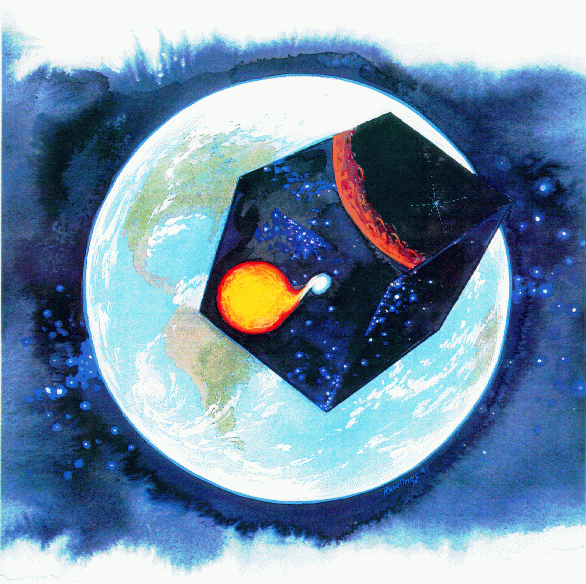
This is another highly idealized artistic conception of just what a traversable wormhole might look like. (This being a very artificial sort of construction.) The idea is that we are looking at a wormhole that is somewhat reminiscent of the monolith in 2001, and seeing different windows to different parts of the universe on various faces of the wormhole. The edges of the cube would be supported by negative tension cosmic string. (I should not need to tell you that this is well beyond our current capabilities; and there are suspicions that maybe it will always be beyond our capabilities.)
(Copyright Ian Rawlings 1994: Provided under "fair use" doctrine: NOT for commercial re-use.)
Artistic conception of a Traversable Wormhole: III
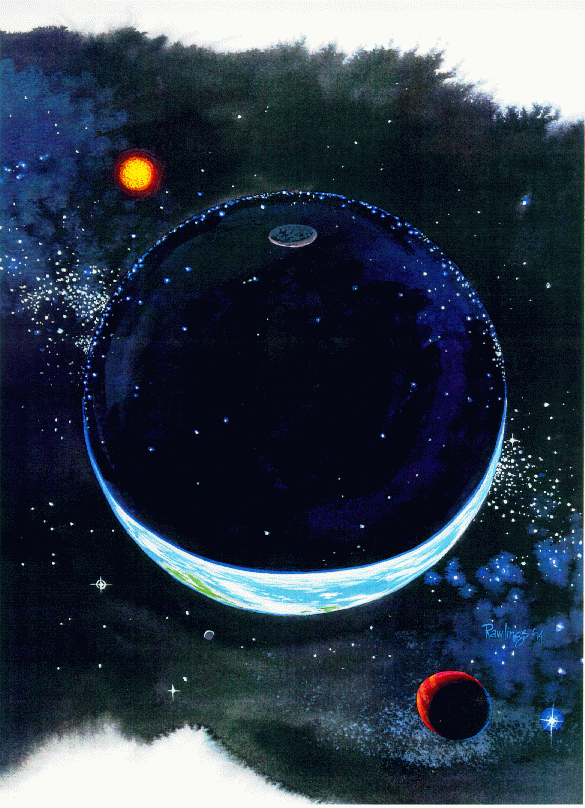
This is yet another highly idealized artistic conception of just what a traversable wormhole might look like. The idea is that we are looking into the wormhole throat, and seeing some of the stars on the other side, plus a partial distorted image of a planet and moon that are nearby on the other side of the wormhole throat.
(Copyright Ian Rawlings 1994: Provided under "fair use" doctrine: NOT for commercial re-use.)
Schematic description of a Traversable Wormhole

This is a highly idealized schematic description of the spacetime geometry of a traversable wormhole.
Inter Universe Traversable Wormhole

This is a schematic rendition of what an inter-universe wormhole might look like. The idea is that the geometry of space and time is sufficiently contorted to form a bridge through to another universe. Early ideas along these lines are due to Albert Einstein and Nathan Rosen , with further developments by John Archibald Wheeler. The most recent flurry of interest in traversable wormholes was prompted by Kip Thorne and Michael Morris.
Intra Universe Traversable Wormhole

Dumb-bell Wormhole

Topologically Trivial Wormhole

Generic wormhole: focus on the throat
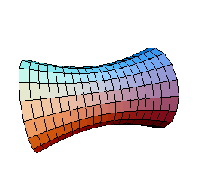
Generic wormhole: a distorted throat

Artistic conception of spacetime foam
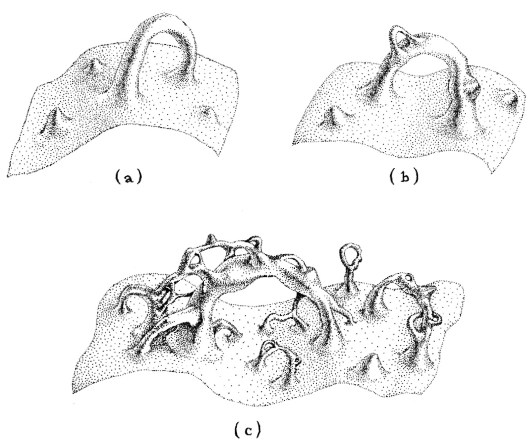
This is a highly idealized artistic conception of just what spacetime foam might look like. The idea is that at short enough distances (about a Planck length, 10^{-35} metres) there should be severe quantum fluctuations in the geometry of sopacetime; possibly severe enough to cause wormholes to form and evaporate on a continual basis.
(Copyright Kip Thorne 1994: From "Black holes and time machines: Einstein's outrageous legacy"; Provided under "fair use" doctrine: NOT for commercial re-use.)
Further information on wormholes
A good popular level description of Lorentzian wormholes:Black Holes and Time Warps: Einstein's Outrageous Legacy
Kip. S. Thorne (Norton, New York, 1994).
The BBC has a documentary in the Horizon series:
The Time Lords, Judith Bunting, 2 Dec 1996.
http://www.bbc.co.uk/horizon/96-97/series96.htm
Horizon homepage
If you know some differential geometry, some general relativity, and some quantum field theory
(not for the faint of heart):
Lorentzian Wormholes: from Einstein to Hawking
Matt Visser (AIP Press, New York, 1995)
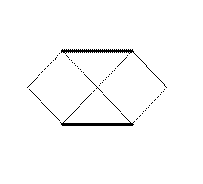
Penrose diagram for a maximally extended Schwarzschild black hole
(This one is a little more technical.) This is a schematic representation of the causal structure of an eternal black hole. All light rays travel at 45 degree angles in this diagram. The thick lines at the top and bottom are the past (white hole) and future (black hole) singularities. Don't try to use this as a wormhole. You will die, very messily.

Penrose diagram for an astrophysical black hole
(This one is a little more technical.) This is a schematic representation of the causal structure of an astrophysical black hole formed by stellar collapse. All light rays travel at 45 degree angles in this diagram. The thick line at the top is the future (black hole) singularity. There is no past singularity. There is nothing even vaguely resembling a wormhole.
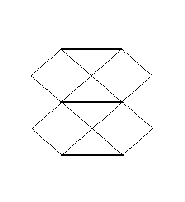
Penrose diagram for a time hole
(This one is a little more technical.) This is a schematic representation of the causal structure of a time hole. All light rays travel at 45 degree angles in this diagram. The thick line at the middle is what would have been the future singularity of an eternal black hole. It is possible, (though maybe unlikely) that quantum effects soften the classical singularity and lead to another universe. This would be a one-way trip, since you would also be most likely squashed down to Planck length sizes on the trip your chances of survival are minimal.
Other non-technical information about physics and science:
Some general interest articles of mine
Scientific American homepage
BBC Horizon homepage
PBS Nova homepage
The Internet Pilot to Physics [TIPTOP]
Personal technical information:
Vitae
Publication List
Research Interests
Book: Lorentzian Wormholes---from Einstein to Hawking
General technical information:
Los Alamos Archives:
http://xxx.lanl.gov
Stanford Bibliographic Database (SPIRES):
http://www-spires.slac.stanford.edu/find/hep
Exit routes:
To my personal homepage
To my standardized departmental homepage
To the Mathematics Department Page
